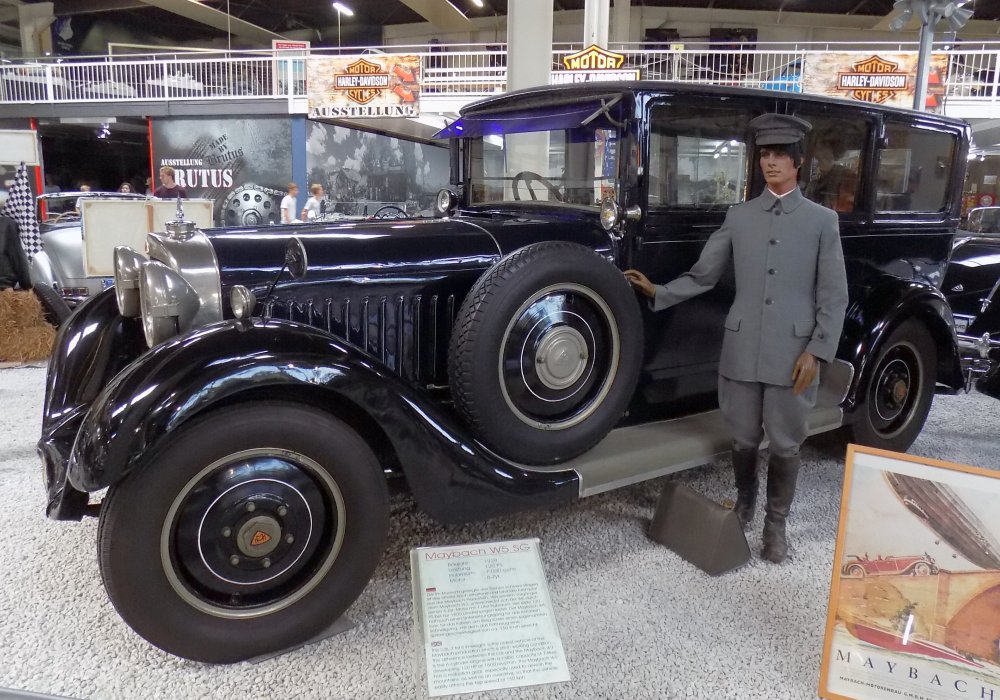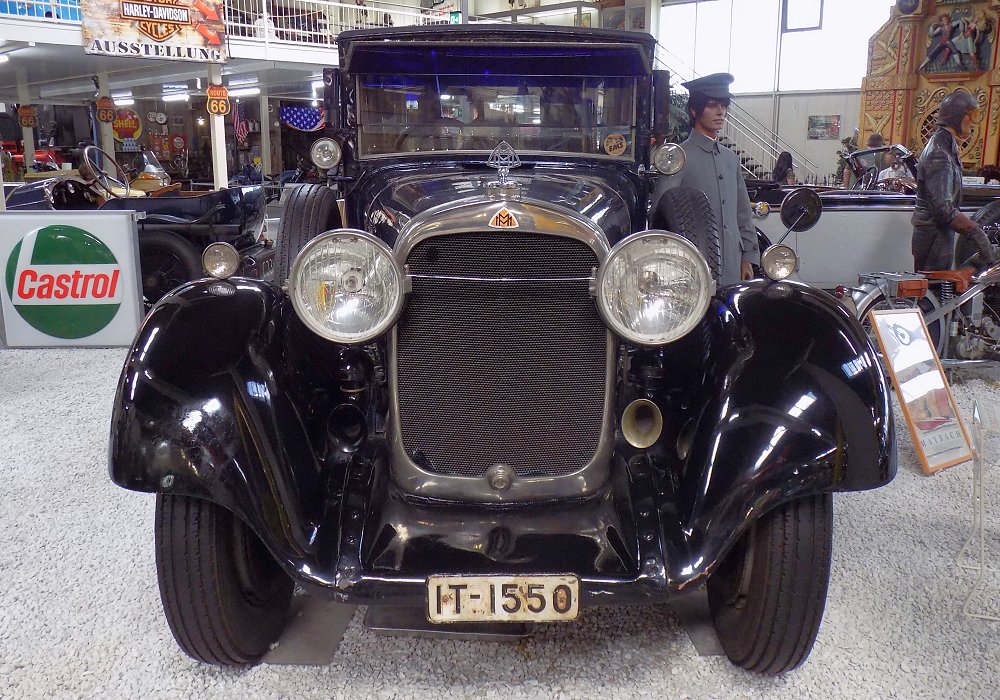Description
The Maybach W 5 SG, introduced in 1928, was the refined and technically advanced successor to the earlier W 5, representing a decisive step in Maybach’s evolution toward even greater smoothness, luxury and mechanical sophistication. While the original W 5 established Maybach as a premier builder of high-end automobiles, the W 5 SG sharpened the formula with more power, improved running refinement and an upgraded transmission system that embodied Maybach’s engineering-first philosophy. It became one of the marque’s most important pre-Zeppelin models and a defining example of Weimar-era German luxury.
At the heart of the W 5 SG was an enlarged and reworked version of Maybach’s renowned straight-six engine. Displacement rose to 7.0 litres, but careful internal improvements gave the SG greater efficiency, improved quietness and a smoother delivery of its abundant torque. Output increased to around 140 horsepower, placing the car among the most powerful luxury automobiles of the late 1920s. The engine’s character was dominated by its turbine-like smoothness and its effortless ability to move large, heavy coachbuilt bodies with complete composure. Its running quality drew directly on Maybach’s experience in high-performance aircraft engines, and the SG variant became widely regarded as one of the finest straight-sixes of its generation.
The SG’s defining mechanical feature was the adoption of the improved Maybach-Wandler transmission, a highly advanced torque-converter-based semi-automatic system that made the car exceptionally easy to drive for its size and power. This “Schalt-Getriebe” — the SG designation referring to a development of the shift-and-converter arrangement — allowed the driver to operate the car without clutch use in many situations, delivering extremely smooth gear changes and removing the effort typically required to manage a large-engined luxury car. The system also improved acceleration and hill-climbing ability by allowing the torque converter to multiply torque at low speeds.
The chassis remained a robust ladder-frame design, engineered to carry the largest and most luxurious coachwork available. The long wheelbase provided superb ride comfort, helped by supple semi-elliptic springs and carefully tuned damping. Steering was slow but precise, emphasising smoothness over agility. Maybach marketed the W 5 SG as a platform for the very finest custom bodies, and Europe’s premier coachbuilders responded with an array of imposing and elegant creations. Formal limousines, Pullman-bodied saloons, sweeping cabriolets and elaborately trimmed touring cars were all offered, each tailored to the preferences of wealthy industrialists, financiers and heads of state.
On the road the W 5 SG delivered the qualities that would become synonymous with Maybach: a serene, near-silent ride, an unwavering sense of mechanical authority and effortless performance even at modern motorway speeds. The combination of vast torque and the Wandler transmission meant the engine rarely needed to rev hard. The car surged forward smoothly from low speeds and could travel long distances with remarkable refinement. For its era, the W 5 SG set new standards in drivability, especially considering its substantial size and the passenger accommodations it was designed to carry.
The interior, as always with Maybach, varied with the coachbuilder’s commission. However, most examples were furnished with the very highest level of craftsmanship. Deep leather seating, polished hardwood veneers, intricate metal switchgear, thick carpeting, folding tables, smoking sets, intercom systems for chauffeur communication and even early heating arrangements were typical. The W 5 SG’s cabin was conceived as a sanctuary from the outside world — quiet, richly trimmed and engineered to an exacting standard.
The W 5 SG played a vital role in cementing Maybach’s position at the pinnacle of luxury motoring, serving as the transitional model leading to the magnificent DS “Zeppelin” series of the 1930s. It demonstrated that Maybach could not only equal but exceed the engineering achievements of rivals such as Mercedes-Benz, Hispano-Suiza, Horch and Rolls-Royce. Its blend of mechanical sophistication, refinement and bespoke craftsmanship made it one of the defining German prestige cars of the late 1920s.
Today, surviving W 5 SGs are extremely rare and highly valued. Their significance lies not just in their mechanical and historical importance, but also in their role as the ancestors of the legendary Zeppelin models. The W 5 SG remains a superb example of early twentieth-century engineering ambition — a commanding, beautifully built luxury car that showcased what Maybach could achieve long before its modern revival.


